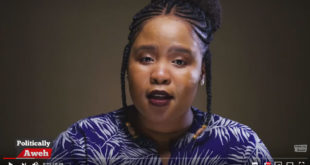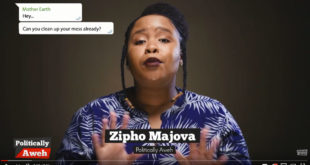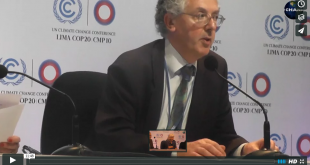US Center Presenter from Shell Oil Company, US, speaks on Shell’s Global Adaptation process in terms of Climate Change risks, operational hazards and challenges at facilities around the world, at COP 20, Lima.
In terms of Risk Assessment for the global group, we started by brainstorming in ‘think-tank’ sessions, how we might ‘inventorize’ the climate change risks of all the facilities around the world, working with a UK based, specialist consulting company, ‘Acclimatise’, experts in Climate Change Adaptation and Risk Management, using climate models and risk assessment tools to identify and review the risks in terms of Hazard x Vulnerability (Shifting climatic patterns), levels of Hazard Severity (Low/Med/High frequencies) and Challenges in Risk Assessment of site design and lifetime future projections.
Shell’s current approach is threefold in perspective, i.e. Modelling of Climate Impacts (UK MET office and Sea Level rise modelling), Management of Risk within our Operating procedures and Impacts – ‘Outside the Fence line’, which encompasses two main streams, viz; a. Understanding the impacts of Climate Change on the Shell workforce, local communities, physical and sociopolitical infrastructures and b. the role of Shell in community adaptation and extreme weather event response.
In terms of updating the design criteria for new projects: having identified what the overall changes and impacts are and what risks we are facing, factors like location, height above sea level, resilience to temperatures, etc., being taken into account, these could then be built in and design parameters set for that project, which will effectively manage the risk going forward for at least another 30-40 years, which is the bulk of the lifetime of a project.
A further step in this process is carrying out the screening of all existing assets, divided into three clear categories in terms of Inputs : (Gather and understand climate data and superimpose the asset data), Analysis : (Identify interactions between climate change and asset vulnerability and assess the risk) and Outputs : (Asset based reporting and systematic and consistent risk ranking across all assets), which taking all into consideration, will result in global decisions being implemented globally.
In order to meet the rising energy demand in the most socially, environmentally, and economically responsible way, we need to leverage the full power of innovation: the capacity for doing things differently and better than before, therefore, across the world, we work in collaboration with governments, other companies and a range of non-governmental organizations. Working together in this way helps to speed up the development of new, lower carbon energy and helps to improve our understanding of the wider context in which we work.
Read further :
http://www.acclimatise.uk.com/
http://www.shell.us/about-us/who-we-are/our-leaders.html
 Mother Channel Environmental, climate change news and media.
Mother Channel Environmental, climate change news and media.



